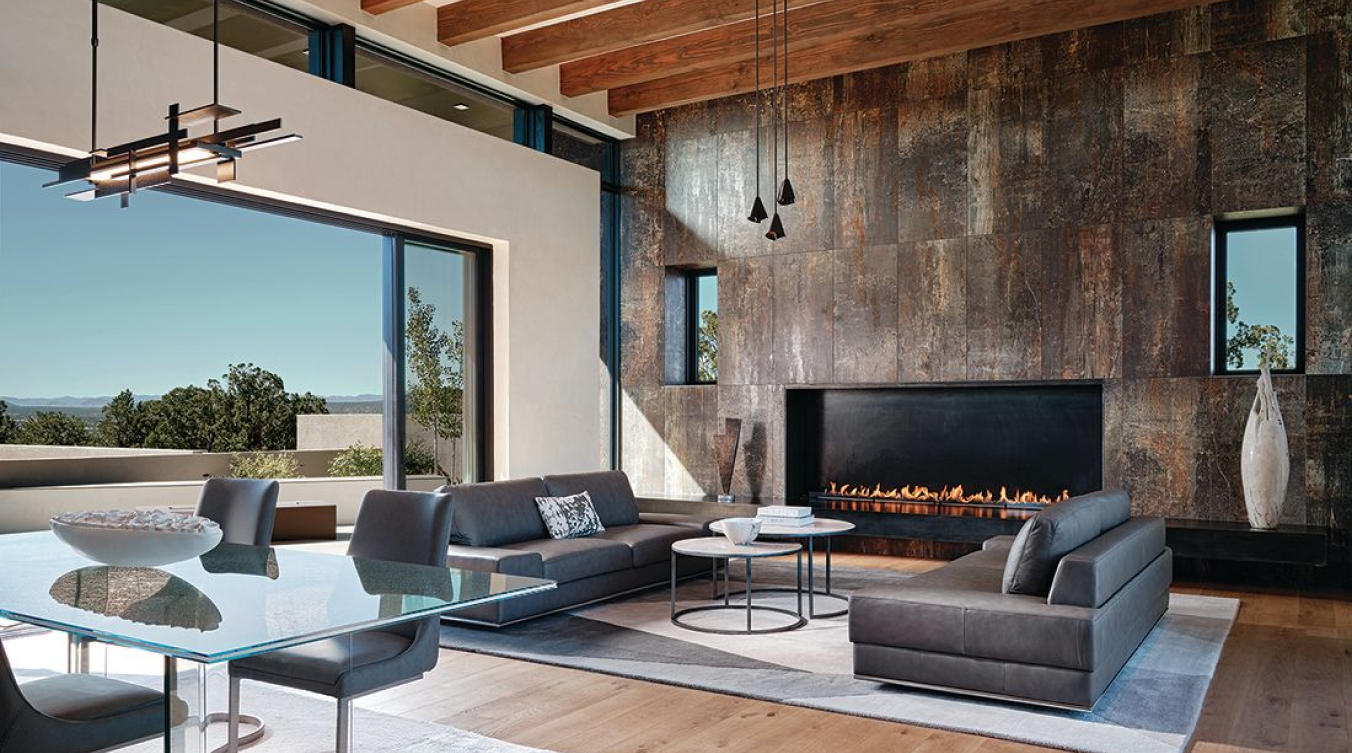
Big Windows Bring Views and Light, But Also Heat: What Can We Do?
Modern architects face the challenge of balancing the increasing heat from climate change with the desire for large windows to showcase views and take advantage of natural light. This presents a complex task as architects strive to create buildings that are not only aesthetically pleasing but also energy-efficient and environmentally sustainable. To address this issue, Archaeo Architects are incorporating various design strategies and technologies that strike a balance between preserving views and creating energy-efficient spaces.
Sustainable design practices undergird all of our projects. This involves designing buildings that minimize their impact on the environment and maximize energy efficiency. Sustainable design principles include optimizing natural lighting, using energy-efficient materials, and employing renewable energy sources such as solar power. By integrating these practices, we can reduce the need for excessive artificial lighting and heating, thus minimizing energy consumption and mitigating the heat generated by large windows.
Advanced glazing technologies also play a crucial role in balancing heat control and views. We constantly search for and use high-performance glazing systems that offer better insulation and solar control. These technologies include low-emissivity coatings, double or triple glazing, and spectrally selective coatings. These advanced ways of constructing windows can reduce heat transfer, minimize solar gain, and maintain comfortable indoor temperatures while still allowing for ample natural light and unobstructed views.
In keeping with Archaeo Architects’ principle of matching your home to the land, we also consider window orientation and shading when balancing the desire for large windows with climate change challenges. By strategically positioning windows and using shading devices such as overhangs, louvers, and awnings, we can control the amount of direct sunlight entering a building. This helps to prevent excessive heat gain during hot seasons while still allowing for views and natural daylighting. We can also specify smart technologies that automate shading systems based on the position of the sun and real-time weather conditions, optimizing energy efficiency and comfort.
Landscaping strategies also contribute to balancing heat control and views. Architects are incorporating green roofs, vertical gardens, and trees strategically placed to provide shade and reduce the overall heat island effect of buildings. These elements not only help to cool the building envelope but also enhance the overall aesthetics of the structure. By integrating green spaces into the design, architects can create a more sustainable and visually appealing environment while mitigating the heat generated by large windows.
In conclusion, modern architects are actively addressing the challenge of balancing the increasing heat from climate change with the desire for large windows to showcase views. Through the incorporation of sustainable design practices, advanced glazing technologies, window orientation and shading, and landscaping strategies, architects are finding innovative solutions to create energy-efficient spaces without compromising on the aesthetic appeal of large windows. By striking this balance, we can create sustainable, comfortable, and visually stunning buildings in the face of climate change.
Sources:
- “Balancing Act: How Architects Are Designing for Climate Change” – ArchDaily
- “Sustainable Design Strategies for Coping with Climate Change” – The Architect’s Newspaper

